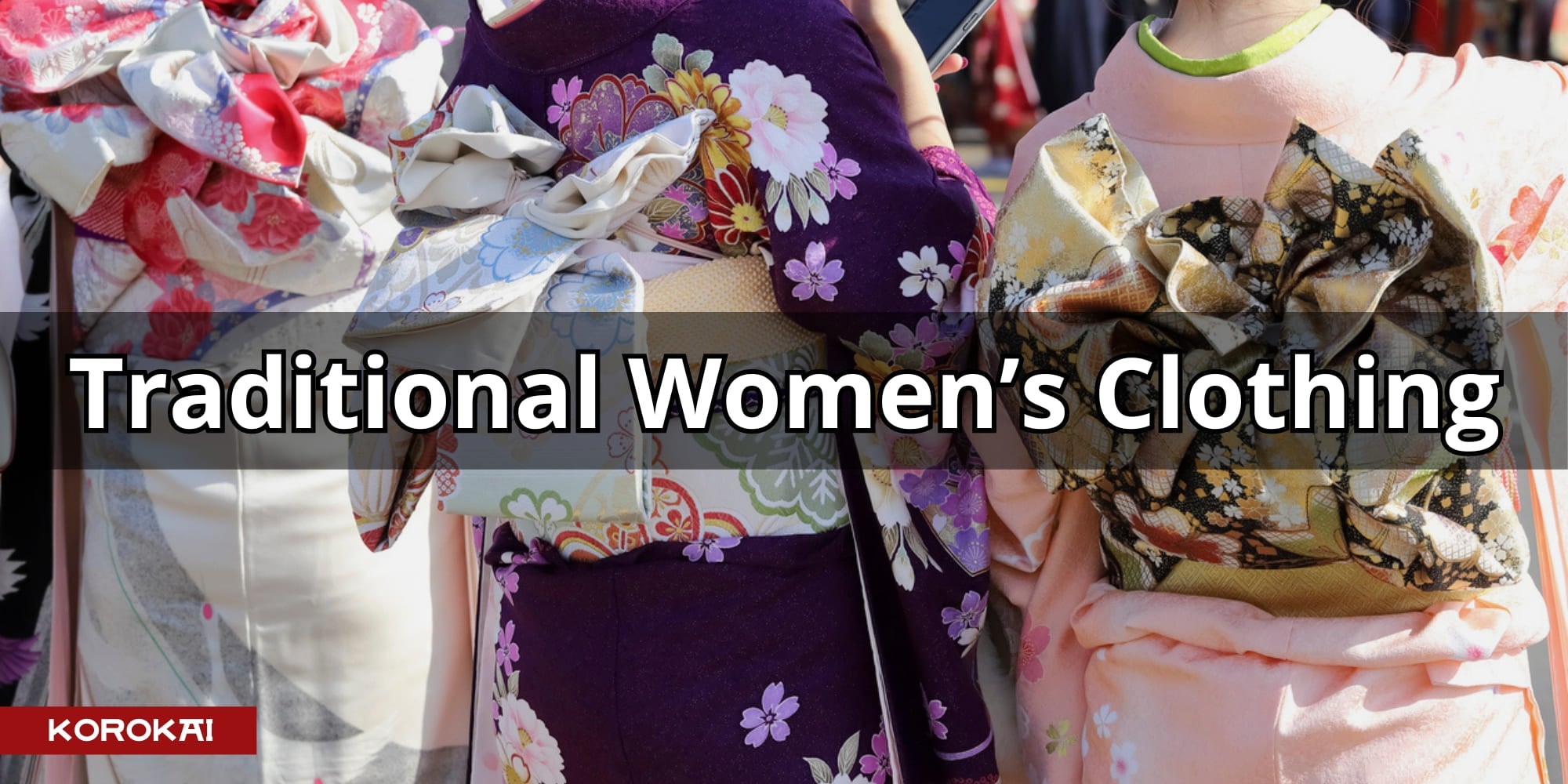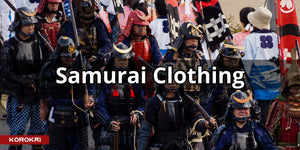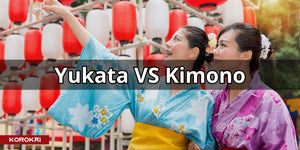1. Furisode

The Furisode is a vibrant symbol of youth, traditionally worn by unmarried Japanese women. Its distinctive long sleeves, which nearly touch the ground, are crafted from luxurious silk and display colorful patterns. These designs often feature floral motifs, symbolizing the wearer's beauty and availability for marriage. The furisode is particularly prominent at formal events like the Coming of Age Day, marking a young woman's transition to adulthood.
This garment not only showcases personal elegance but also upholds deep cultural traditions. Each furisode is a work of art, carefully designed to reflect the wearer's individuality while embracing familial and cultural values. It is highly regarded in Japanese society, embodying a blend of sophistication and cultural heritage, making it a cherished element of a young woman's formal wardrobe.
2. Yukata

The Yukata is a casual and colorful variant of the traditional kimono, favored during the warm summer months in Japan. Made from breathable cotton, it is lighter and more relaxed, often adorned with vibrant patterns such as flowers or festival motifs. This attire is popular at summer events like fireworks and festivals, where its simplicity and comfort are especially appreciated during this season.
Yukatas are not only practical due to their ease of wear and care but also serve as a symbol of culture and summer Fashion in Japan. They are typically worn with a simple obi (belt) and geta (wooden sandals), forming a chic yet casual ensemble. This combination, along with the Yukata's accessibility and aesthetic appeal, has made it a beloved seasonal staple in Japanese fashion.
3. Hikizuri

The Hikizuri is a traditional Japanese kimono distinguished by its long, trailing skirt, primarily worn by geishas and stage performers. This type of kimono is designed to sweep gracefully along the floor, creating an elegant visual effect during performances. Richly decorated with intricate patterns and vibrant colors, Hikizuri often depict scenes from nature or classical literature, adding to their dramatic allure.
Due to its length, wearing a Hikizuri requires skill, as the fabric must be managed to prevent tripping while allowing for fluid movement. This garment is a testament to the wearer's training and grace, particularly among apprentice geishas, who use such attire to enhance their artistic presence. The Hikizuri not only serves as a functional piece of cultural attire but also as a symbol of traditional Japanese performing.
4. Tsunokakushi

The Tsunokakushi is a traditional Japanese headpiece worn by brides during Shinto wedding ceremonies. Its name translates to "horn hiding," symbolizing the bride's intention to tame her jealousy and embrace kindness and patience within her marriage. Made of white silk, the tsunokakushi covers the hair and is tied at the back, complementing the ornate bridal kimono known as the shiromuku, and symbolizing the purity and unity.
This headgear not only represents a rite of passage for the bride but also highlights the ceremonial gravity and cultural significance of Japanese weddings. The aesthetic simplicity of the tsunokakushi contrasts with the elaborate styling of traditional bridal attire, making it a poignant emblem of the bride's transformation and commitment to her husband.
5. Jūnihitoe

The Jūnihitoe is an elaborate ensemble from the Japanese imperial court, primarily worn during the Heian period. It consists of multiple layers of robes, typically twelve, each carefully chosen for their colors and significance, creating a rich tapestry of silk that signifies the wearer's status and the nuanced aesthetics of courtly life. This complex garment showcases the height of classical Japanese craftsmanship at cultural exhibitions.
Despite its historical significance, the Jūnihitoe is rarely worn outside of these contexts due to its complexity and the sheer weight of the silk layers. However, it remains a symbol of beauty and elegance in traditional Japanese culture, representing not only the sophisticated textile craftsmanship of ancient Japan but also the elaborate protocols and cultural practices of the imperial court during this period.
6. Happi Coat

The Happi Coat, a traditional Japanese garment, is essential to the vibrant atmosphere of festivals and communal celebrations. It's a lightweight, straight-sleeved coat typically crafted from cotton, designed for comfort and ease of movement. The coat often features bold symbols or the crests of specific festival groups, enhancing its visual appeal while signifying unity and team spirit among wearers.
This functional yet stylish attire continues to be a popular choice at Japanese matsuri (festivals), where it not only adds to the celebratory flair but also fosters a sense of community and belonging. Its simplicity and practicality have allowed the Happi Coat to transition smoothly into modern celebrations, maintaining its role as a cultural staple in both traditional and contemporary Japanese settings.
7. Okobo Shoes

Okobo, also known as pokkuri shoes, are traditional Japanese wooden sandals recognized by their distinct, high platform. These shoes are primarily worn by maiko, or apprentice geisha, to help them perfect their graceful walking technique. The height of the platform serves to protect the elaborate kimonos from touching the ground. Okobo are usually made from a single block of wood and are often lacquered to enhance their durability and aesthetic appeal.
The design of okobo includes a thong that holds the foot in place, and despite their height, they are surprisingly stable and comfortable. The characteristic "clacking" sound they make when walking is iconic and adds to the cultural experience of traditional Japanese festivities. Okobo's unique design and functional qualities continue to make them an integral part of geisha attire and tradition.
8. Tomesode

The Tomesode is a highly formal kimono worn by married women, particularly at significant occasions like weddings and tea ceremonies. Distinguished by its elegant design, the tomesode is typically black and adorned with intricate patterns only below the waistline, allowing for a sophisticated yet understated appearance. This feature makes it unique among kimonos, as it displays familial crests that signify its formality and the wearer’s marital status.
As the most formal type of kimono for married women, the tomesode reflects a commitment to traditional values and social decorum. Its careful balance between simplicity and ornate design not only showcases the artistry of Japanese textile crafts but also serves as a cultural emblem of dignity and grace at formal gatherings in Japan.
9. Hanten

The Hanten is a traditional Japanese winter garment that combines warmth and style, making it ideal for wear during the colder months. It is typically made from heavy cotton, padded for insulation, and features a boxy, hip-length design that allows for freedom of movement. Often characterized by a simple tie closure at the front, the Hanten may also showcase intricate patterns or even family crests, reflecting its wearer's identity and aesthetic preferences.
Originally designed for merchants and craftsmen, the Hanten has evolved into a popular choice for everyday wear in modern Japan. Its practical design and aesthetic versatility make it suitable for a range of activities, from casual outings to more formal events, embodying a blend of traditional Japanese craftsmanship and contemporary fashion sensibilities.
10. Seifuku

Seifuku, the iconic Japanese school uniform, has become a symbol of youth and education in Japan, recognized globally through its portrayal in popular media like anime. For boys, the uniform typically consists of a tailored jacket and trousers, while girls often wear a sailor blouse paired with a pleated skirt. Each school's seifuku varies slightly, but the essence remains the same, designed to foster a sense of unity among students.
Beyond its practical role in schools, the seifuku has permeated various aspects of Japanese culture, influencing fashion and entertainment. Its distinctive look has been embraced by costume enthusiasts worldwide, celebrating its unique blend of formality and style. This cultural embrace of the seifuku underscores its enduring impact not just as a school attire but as a significant element of Japanese identity.
11. Haori

The Haori is a traditional Japanese jacket that serves as an outer layer over kimonos. Originally worn by men, this versatile garment has since become popular among women, adapting to modern fashions while retaining its classic appeal. Characterized by its T-shaped design and open front, the Haori does not close like a typical Western jacket but is held together by a small, decorative tie called a haori-himo.
This elegant jacket is often crafted from silk or fine woven fabrics, featuring minimalistic designs or subtle patterns, which complement the intricate details of the kimono underneath. In contemporary Japan, the Haori has transcended traditional settings, being styled with everyday modern attire for a chic, cross-cultural look that bridges the gap between traditional Japanese wear and global fashion trends.
12. Shiromuku

The Shiromuku is a traditional Japanese bridal outfit, epitomizing purity and elegance with its all-white ensemble. This formal attire is worn during Shinto wedding ceremonies, where the bride's attire symbolizes her willingness to be dyed with the colors of her new family's customs and traditions. The Shiromuku includes a white kimono, an elaborately tied obi, and a headpiece called a "tsunokakushi,".
This bridal wear is not only a stunning visual representation of traditional Japanese culture but also carries deep symbolic meanings. The all-white color extends from the kimono to the accessories, creating a harmonious and serene appearance that reflects the solemnity and dignity of the wedding ceremony. The Shiromuku remains a cherished part of Japanese matrimonial traditions.
13. Geta

Geta are traditional Japanese footwear that feature a wooden base elevated by two wooden supports. These sandals are designed to lift the wearer off the ground, protecting their feet and kimono from dirt and moisture. Typically worn with yukata, the casual summer kimono, geta are recognizable by their thong-like straps that hold the foot in place. The wooden construction produces a distinctive clacking sound when walking, adding an auditory element to their unique aesthetic.
These sandals not only serve a practical purpose but also hold a place in Japanese cultural identity. Geta are appreciated for their simplicity and craftsmanship, often featuring carved or painted designs that enhance their visual appeal. As both functional and ornamental items, geta bridge the gap between traditional attire and modern-day fashion, reflecting the timeless Japanese culture.
14. Nemaki

Nemaki is a traditional Japanese garment, often used as comfortable sleepwear or for lounging at home. Made typically from cotton or linen, nemaki are designed for ease and relaxation. This Japanese garment for men and women usually feature a simple, wrap-around style with shorter sleeves and a sash to secure the garment. Their fabrics are soft and absorbent, making them ideal for wearing after a bath or before bedtime.
In Japan, nemaki are not only common in households but are also a staple in traditional inns, known as ryokans, where they are provided to guests to enhance their stay. This practice highlights the garment's role in the cultural tradition of hospitality, showcasing a blend of comfort, practicality, and subtle elegance that defines much of Japanese attire.
15. Kanzashi

Kanzashi are traditional Japanese hair ornaments that enhance the elaborate hairstyles of geisha and brides. Historically, kanzashi indicated the wearer’s status and life events, such as marriage or engagement. These accessories range from simple pins to sophisticated silk or metal floral arrangements, each chosen to complement the wearer’s attire and the occasion. The designs often reflect the season, imbuing each piece with cultural significance and beauty.
Today, they remain integral to traditional Japanese dress, revered for their artistry and elegance. Beyond their conventional use, kanzashi have also found a place in contemporary fashion, adorning hairstyles in a fusion of classic and modern styles. This enduring appeal demonstrates their versatility and the ongoing appreciation for Japan’s rich cultural heritage.







